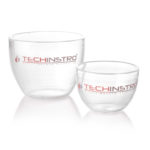Quartz Crucible Without Lid
₹ 2,438.00 – ₹ 323,750.00
Material – Fused Quartz
Standard Operating Temperature ~1150 Degree C (Continuous Usage)
Standard Operating Temperature ~1250 Degree C (Non-Continuous Usage)
Specific surface area – 720 J/kg-k
Purity – 99.99%
Poisson’s ratio – 0.17
Refractive index – 1.5
Tensile strength – 50 MPa (Optimal)
Thermal conductivity – 1.38 W/m-k
Coefficient Of Thermal Expansion – 0.55(106/0C)
Dielectric strength – 30 Ac-kV/mm (volts/mil)
Dielectric constant – 3.82 @1MHz
- Description
- Additional information
Description
The QC (Quartz-crucible) of high purity Silica (SiO2) material, is a transparent container which is resistant to extremely high temperatures as well as being chemically inert to get non-contaminated results. These vessels should also be ideally resilient to thermal shocks.
The QC (Quartz-crucible) are acting as vessels for holding chemicals as the specific thermal or chemical process performed. These are efficient for use as laboratory crucible as well as in industrial applications. These have increasingly replaced the conventional Rotosil crucibles, which were earlier more prominently used in industrial and research applications.
The QC (Quartz-crucible) comes with a lid and without the lid or cap as per requirement. The capacity of it varies from 5ml to 1000ml. There is two main type of the quartz crucible, one is the low form (Curvy Shape), and another is tall form (Cylindrical Shape) crucible. The researched can operate it efficiently at around 1150 degree Celsius.
Quartz Crucible Without Lid Features
Highest chemical purity
Extreme durability
High Material Purity
Higher Annealing point
Remarkably corrosion resistance
Lower coefficient of thermal expansion
Excellent electrical conductivity levels
Efficient optical transmission range
Quartz Crucible Without Lid Applications
Refining precious metal and special alloys
Smelting industry
Lamp-manufacturing sector
Alumina calcinations
Various chemical industrial applications
R & D laboratory uses
Educational Institutes
Rare earth production





